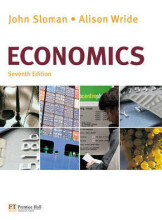Entry and Exit
15 important questions on Entry and Exit
Name three strategy implications for entry/exit
1. When planning for the future, the manager must account for entry. While the exact identity of an entrant is hard to predict, the incumbent should expect the entrant to be either a small greenfield enterprise or a large diversifying firm.
2. Managers should expect most new ventures to fail quickly. However, survival and growth usually go hand in hand, so managers of new firms will have to find the capital to support expansion.
3. Managers should know the entry and exit conditions of their industry. Entry and exit are powerful forces in some industries but relatively unimportant in others.
What are sunk entry cost?
What determines possible entry barriers?
The sum total of this analysis of sunk costs and postentry
competition determines whether there are barriers to entry.
- Higher grades + faster learning
- Never study anything twice
- 100% sure, 100% understanding
What is a structural entry barrier?
Structural entry barriers exist when the incumbent has natural cost or marketing advantages, or when the incumbent benefits from favorable regulations.
What is a strategic entry barrier?
Which three entry conditions does the economist Joseph Bain describe?
- Blockaded entry
- Accomodated entry
- Deterred entry
What is blockaded entry condition in entry-deterring strategies?
Entry is blockaded if structural barriers are so high that the incum-
bent need do nothing to deter entry.
For example, production may require large fixed investments relative to the size of the market (high sunk entry costs), or the entrant may sell an undifferentiated product for which it cannot raise price above marginal cost (low postentry profitability).
What is accomodated entry condition in entry-deterring strategies?
Entry is accommodated if structural entry barriers are low,
and either (a) entry-deterring strategies will be ineffective or (b) the cost to the incumbent of trying to deter entry exceeds the benefits it could gain from keeping the entrant out.
Accommodated entry is typical in markets with growing demand or rapid technological improvements. Entry is so attractive in such markets that the incumbent(s) should not waste resources trying to prevent it.
What is deterred entry condition in entry-deterring strategies?
Entry is deterred (a) if the incumbent can keep the entrant out by
employing an entry-deterring strategy and (b) if employing the entry-deterring strategy boosts the incumbent’s profits.
Frank Fisher calls such entry-deterring strategies predatory acts. Predatory acts may either raise entry costs or reduce postentry profits. We describe several predatory acts later in this chapter.
Name three structural entry barriers?
- Control of essential resources
- Economies of scale and scope
- Marketing advantages of incumbency
Explain the structural entry barrier, control of essential resources.
An incumbent is protected from entry if it controls a resource or channel in the vertical chain and can use that resource more effectively than newcomers.
For incumbents entry-deterring strategies are worth considering if which conditions are met?
- The incumbent earns higher profits as a monopolist than it does as a duopolist.
- The strategy changes entrants expectations about the nature of postentry competition.
Name three entry-deterring strategies for incumbents.
- Limit pricing
- Predatory pricing
- Strategic bundling
What is limit pricing?
Limit pricing refers to the practice whereby an incumbent firm charges a low price to discourage new firms from entering.
Three conditions where excess capacity can be usefull preventing entries?
- The incumbent should have a sustainable cost advantage. This gives it an edge in the event of entry and a subsequent price war.
- Market demand growth is slow. Otherwise, demand will quickly outstrip capacity.
- The investment in excess capacity must be sunk prior to entry. Otherwise, the entrant might force the incumbent to back off in the event of a price war.
- The potential entrant should not itself be attempting to establish a reputation for toughness.
The question on the page originate from the summary of the following study material:
- A unique study and practice tool
- Never study anything twice again
- Get the grades you hope for
- 100% sure, 100% understanding































